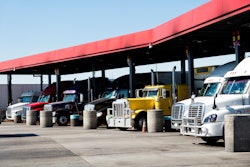Supply chain and raw material constraints, war in Eastern Europe and lockdowns in China dragged down trailer orders last month, with FTR reporting booked demand at 16,800 units – 53% below March but up 4% year-over-year. Trailer orders for the past 12 months have totaled 252,000 units.
FTR Vice President of Commercial Vehicles Don Ake said the global upheaval has offered no incentives for trailer OEMs to overbook.
"The situation in Shanghai is going to delay some components that are needed to make trailers. In addition, the war in Europe is creating shortages of aluminum with an associated spike in pricing," he said, adding these and other doubts have delayed OEMs from issuing quotes for 2023 requirements.
The low order volumes reflect OEMs filling in the months of the 2022 production schedule they feel more confident about.
“The pent-up demand for trailers is estimated at over 100,000 units. But now, the supply chain difficulties are expected to extend into 2023. OEMs will then have to build at high rates for an extended time to catch up to demand," Ake said. "The short-term prospects are subdued, but the long-term outlook remains bright."
Frank Maly, director commercial vehicle transportation analysis and research at ACT Research, said while seasonal patterns call for a sequential decline in net orders in April, preliminary reports indicate that volumes fell more than might have been expected. Just as dry vans provided solid support in March, they were responsible for the dramatically lower April bookings.
"While some may think recent economic challenges could be a contributing factor to the sequential decline, it’s more likely that a reluctance to push the orderboard horizon into next year is responsible, as OEMs continue to closely control order acceptance," Maly said. "Final reporting will likely show that these lower order levels will still result in an average backlog-to-build ratio of just over eight months for the total industry. That will stretch through the end of the year at current production levels. Our discussions indicate active negotiations between OEMs and fleets continue, as fleets prepare to make commitments for 2023 production, when that opportunity becomes available.”











